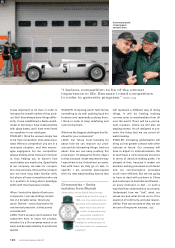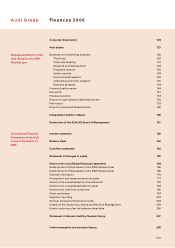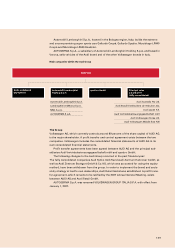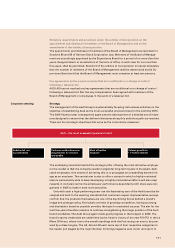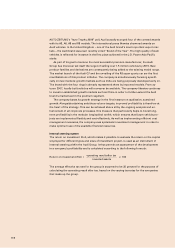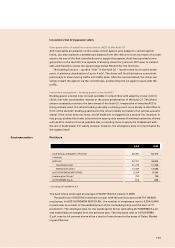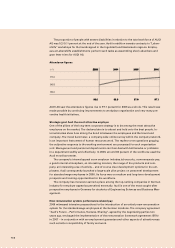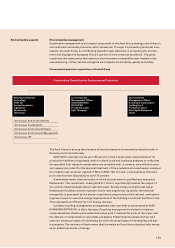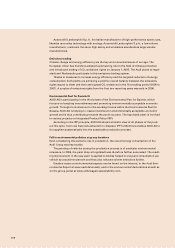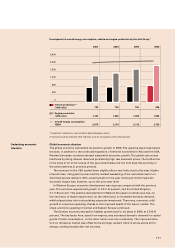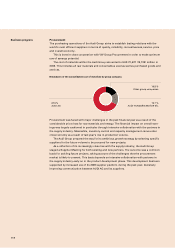Audi 2006 Annual Report Download - page 136
Download and view the complete annual report
Please find page 136 of the 2006 Audi annual report below. You can navigate through the pages in the report by either clicking on the pages listed below, or by using the keyword search tool below to find specific information within the annual report.
1 3 4
V8 FSI mid-engine in the Audi R8
The evolution of FSI petrol direct injection has reached a new high point with the V8 FSI mid-
engine. The high-revving engine of the Audi R8 develops 309 kW (420 bhp) from a swept
volume of 4.2 litres, generates 430 Newton-metres of torque and accelerates the super
sports car from 0 to 100 km/h in 4.6 seconds.
LED headlights for the Audi R8
The Audi R8 will become the first production car with all main headlight functions (low-
beam headlights, high-beam headlights, daytime running lights, turn indicators) available in
LED technology. The marked advantages compared with conventional headlights include a
significantly longer operating life and, above all, greater flexibility in automotive design.
All-aluminium body of the Audi R8
An Audi Space Frame serves as the supporting structure for the all-aluminium body. With its
perfect blend of low weight and extremely high rigidity, it provides the basis of superior
handling characteristics coupled with outstanding crash behaviour. The entire body weighs
only 272 kilograms – and is therefore around 20 percent lighter than conventional designs.
V12 TDI – an international sensation in the Audi Q7
The world’s most powerful diesel engine for a passenger car was unveiled in the Audi Q7,
and will soon go into production. In the roadgoing version derived from the Le Mans-
winning R10, the 12-cylinder diesel unit develops 368 kW (500 bhp) and 1,000 Newton-
metres of torque, and accelerates from 0 to 100 km/h in only 5.5 seconds. The average fuel
consumption over the overall cycle is 11.9 litres.
Audi TDI with “Bluetec®”
Audi is launching Bluetec® technology in the American market in 2008 via a partnership with
Volkswagen and DaimlerChrysler, with a view to increasing the popularity of its high-
performance but economical diesel models in the USA. The aim is to demonstrate the ad-
vantages of modern diesel technology to consumers in the USA, too. These innovative emis-
sions treatment systems from Audi involve injecting an aqueous urea solution into the ex-
haust system in small amounts, thus extensively reducing emissions of harmful nitrogen
oxides. This enables the diesel engines to meet the strict US emission standards in all US
states. The Audi Q7 V6 TDI will be the first model to feature this advanced technology.
Audi photomix detectors
In systematically pushing forward with the development of photomix detector technology
(PMD) Audi Electronics Venture GmbH, a fully owned subsidiary of AUDI AG, in conjunction
with PMDTechnologies and Harman/Becker, is making a major contribution towards improv-
ing safety standards in road traffic. This emerging technology helps a vehicle to “see spa-
tially” and thus actively and rapidly respond to hazards such as sudden obstructions or
drifting out of the lane. It is virtually unaffected by direct sunlight and also functions in the
dark, thanks to a light source that emits invisible infrared light ahead of the vehicle. The
light reflected by objects in front of the vehicle is then picked up by a PMD sensor and used
to generate a three-dimensional image. Thanks to the high speed of light, this is achieved
with a precision of 6.6 billionths of a second. Photomix detectors could also be used for
occupant protection and in intelligent operating systems in vehicles in the near future.


